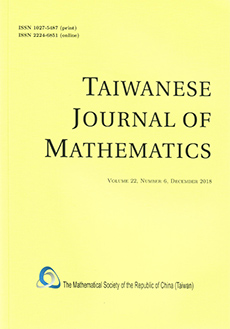Abstract
Let $L:=-\mathrm{div}(A\nabla)+V$ be a Schrödinger type operator with the nonnegative potential $V$ belonging to the reverse Hölder class $RH_{q_0}(\mathbb{R}^n)$ for some $q_0\in[n,\infty)$ with $n\ge3$, where $A$ satisfies the uniformly elliptic condition. Assume that $\varphi:\,\mathbb{R}^n\times[0,\infty)\to[0,\infty)$ is a function such that $\varphi(x,\cdot)$ is an Orlicz function, $\varphi(\cdot,t)\in {\mathbb A}_{\infty}(\mathbb{R}^n)$ (the class of uniformly Muckenhoupt weights) and its uniformly critical lower type index $i(\varphi)\in(\frac{n}{n+\alpha_0},1]$, where $\alpha_0\in(0,1]$ measures the regularity of kernels of the semigroup generalized by $L_0:=-\mathrm{div}(A\nabla)$. In this article, we first prove that operators $VL^{-1}$, $V^{1/2}\nabla L^{-1}$ and $\nabla^2L^{-1}$ are bounded from the Musielak-Orlicz-Hardy space associated with $L$, $H_{\varphi,\,L}(\mathbb{R}^n)$, to the Musielak-Orlicz space $L^{\varphi}(\mathbb{R}^n)$. Moreover, we also obtain the boundedness of $VL^{-1}$ and $\nabla^2L^{-1}$ on $H_{\varphi,\,L}(\mathbb{R}^n)$. All these results are new even when $\varphi(x,t):=t^p$, with $p\in(\frac{n}{n+\alpha_0},1]$, for all $x\in\mathbb{R}^n$ and $t\in[0,\infty)$.
Citation
Sibei Yang. "SOME ESTIMATES FOR SCHRÖDINGER TYPE OPERATORS ON MUSIELAK-ORLICZ-HARDY SPACES." Taiwanese J. Math. 18 (4) 1293 - 1328, 2014. https://doi.org/10.11650/tjm.18.2014.3897
Information





